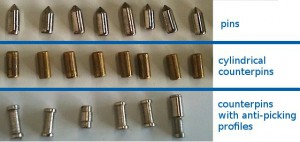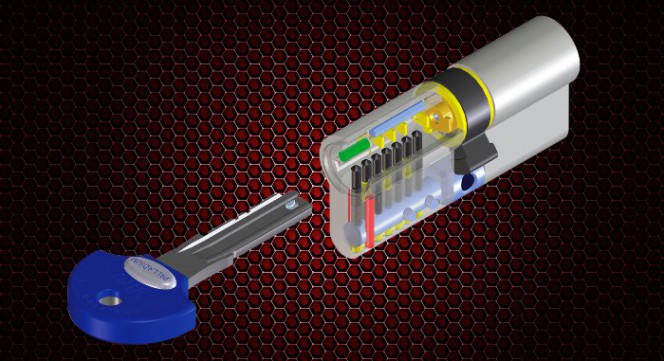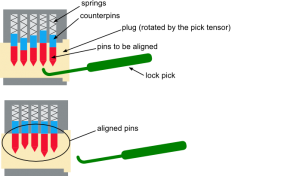Let’s continue our journey to discover the features which, in spite of the common outside shape of the body, make the various European profile cylinders very different from one another, especially in terms of reliability and resistance to attacks.
After seeing in the first two articles the features which allow European cylinders to withstand brute force attacks, which are the most frequent types of attack, let us now begin to see how a European profile cylinder should be made to withstand opening by lock picking, which is less common, but more insidious.
The features which obstruct opening by using dexterity – Part one: lock picking
Opening locks by means of dexterity, although in absolute terms less frequent than with brute force, is more subtle, because it is fairly quiet and often does not leave any signs.
The vast majority of European profile cylinders on the market uses the pin system. We will look in this series of articles at the methods for opening a piston-type lock with dexterity; amongst these methods, the main ones are basically two:
- opening with a tensor and pick (lock picking)
- key bumping
There are also cylinders with a different type of operation, in which the key activates, for example, discs and/or magnets, and we will look at these in a forthcoming blog.
In the next article of this series we will study the features that make a cylinder withstand key bumping. In this article we will look at the solutions which make a piston cylinder resistant to lock picking, such as:
- Increasing the number and varying the shape and the arrangement of the pins
- Increasing the number of possible heights of the pins
- Using counterpins with pick-resistant profile
Number and arrangement of pins
In order to open a cylinder with a tensor and lock pick, one attempts to move one piston after the next with the pick, so as to reach the opening position, while the tensor keeps the plug under the effect of a slight rotation.
This operation is obviously much more difficult the more pins there are and the more varied their arrangement is, on different axes.
Number of heights per pin
The number of possible heights with which it is technically possible to make each pin, increased by the number of pins, determines the theoretical number of possible bittings for that particular cylinder, and thus the number of possible keys which can be obtained. This, besides being an additional security factor, because the greater the number of possible combinations the less likely it is that a key is randomly found which can open more than one cylinder, makes it even more difficult to use the lock pick, because:
- The greater the number of heights used by each piston and the smaller the difference is between two different heights then the greater is the sensitivity and ability required to find the correct height with the lock pick.
- The alternation of several heights of pins, which are different from each other, makes it harder to use the lock pick.

Counterpins which withstand the lock pick
In order to align the pistons in the right position with the lock pick it is necessary to feel and move them with the tool to find the opening position. In high security cylinders, and also in many other types of Viro products, the shape of the counterpins is designed in such a way as to make this operation more difficult. Counterpins of the “double-T”, “coil” or “mushroom head” type are such that, under the action of the pick, their ends, which have a larger diameter than the rest of their structure, tend to fit between the body and plug of the cylinder, making their movement difficult. An effective visual explanation in shown in this video:

The top row shows the pins, the middle row shows the traditional cylindrical profile counterpins and the bottom row shows various counterpins with anti-picking profiles.
Conclusions
Once again, despite the apparent similarity, European profile cylinders can be very different from each other. When choosing a product it therefore important to understand what the demands must be satisfied and, consequently, what features it must possess. High security cylinders, which can withstand lock picking, as well as brute force attacks, are typically used on entrance doors, whilst for internal doors or accesses which can still be passed through in other ways (such as pedestrian garden gates), preference is given to simpler, cheaper and sturdy models.
>> Read also: “How do you recognise a high security European profile cylinder? – Part IV”
See the characteristics of the Viro Palladium high security cylinder
Watch the video presentation of the Viro Palladium high security cylinder

